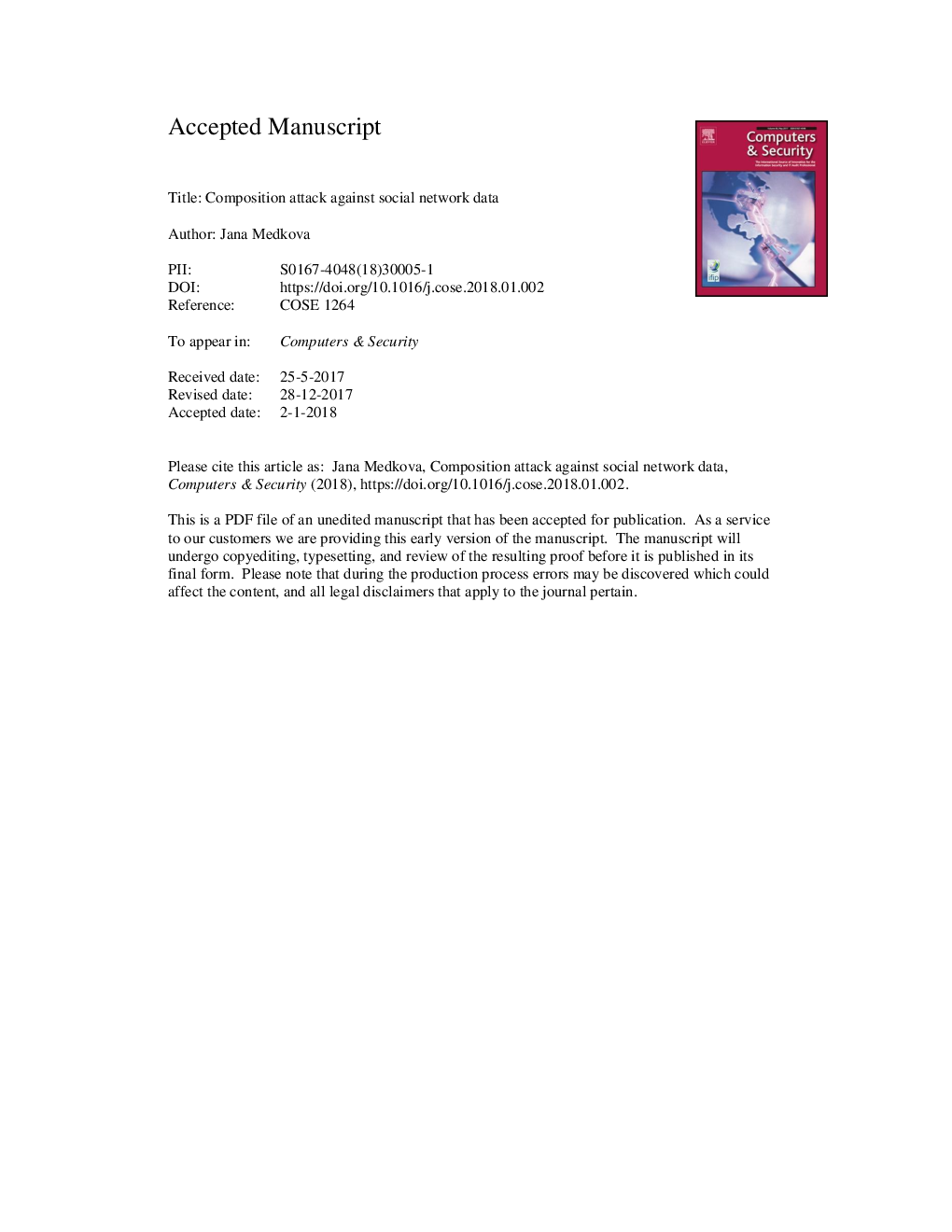| Article ID | Journal | Published Year | Pages | File Type |
|---|---|---|---|---|
| 6883968 | Computers & Security | 2018 | 44 Pages |
Abstract
The importance of social networks is growing with the fast development of social network technologies and the steady growth in their user communities. Given that the collection of data from social networks is essential for academic research and commercial applications, the prevention of leakage of sensitive information has become very crucial. The majority of anonymization techniques are focused on the threats associated with publishing one social network dataset. As most Internet users participate in more than one social network, a user's records are likely to appear in two published social network datasets. The level of anonymity of each dataset may present only a small security risk; however, there is no guarantee that a combination of the two datasets has the same level of anonymity. An attack on the privacy of an individual using two published datasets containing his/her records is called a composition attack. The composition attack was recently investigated as a threat to two relational datasets; however, it has not yet been considered as a potential danger to two datasets containing social network data. The novel contribution of this paper is that the composition attack is applied to anonymized social network data. A new algorithm for the composition attack is proposed and its usability is demonstrated with experiments using pairs of synthetic scale-free networks substituting real social networks.
Related Topics
Physical Sciences and Engineering
Computer Science
Computer Networks and Communications
Authors
Jana Medková,
